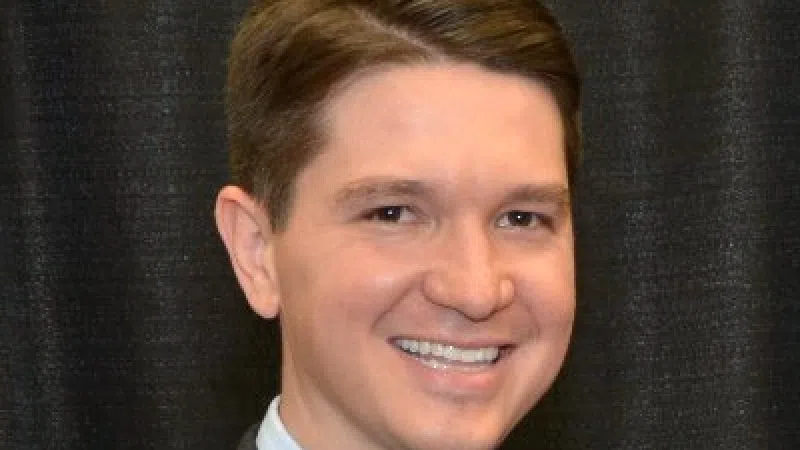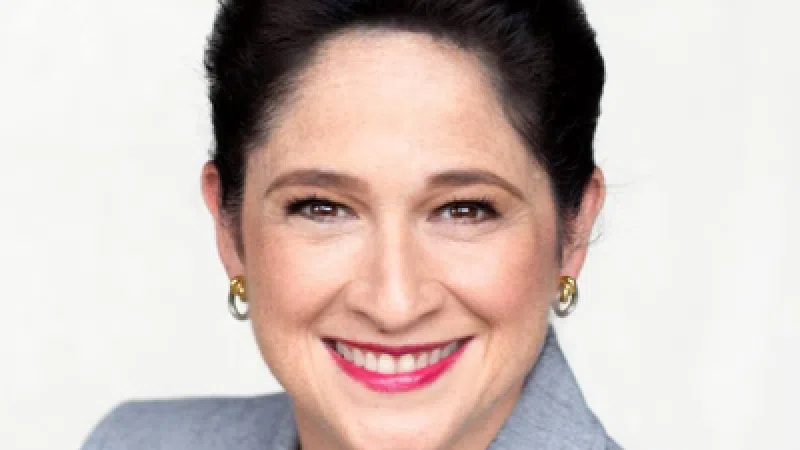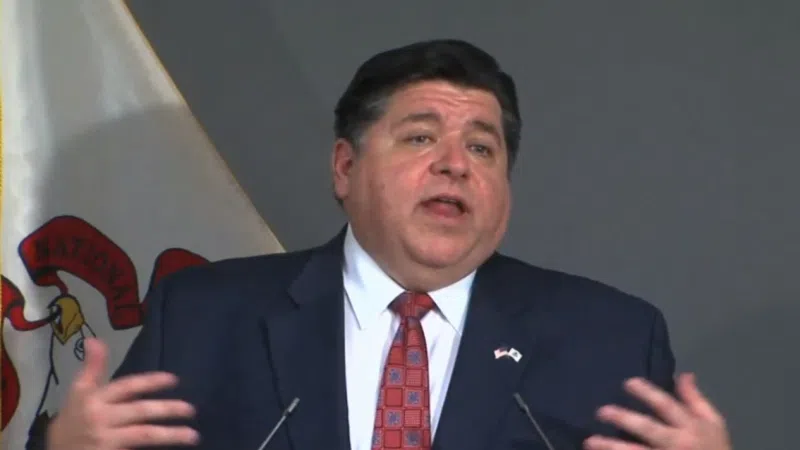Correction, Apr. 7, 2025: This article originally stated that Illinois law currently requires private utilities present an Integrated Resource Plan (IRP) to state regulators every 5 years. This was incorrect. Since the passage of the 2021 Climate & Equitable Jobs Act, Illinois law requires that electricity distributors present an Integrated Grid Plan (IGP) every 4 years.
On Tuesday, March 25, City Water Light & Power administrators presented an updated agenda to Springfield’s Committee of the Whole, detailing several projects which the public utility is undertaking in 2025.
For months, the installation of Advanced Metering Infrastructure (AMI) has been mentioned at council as a major priority for CWLP; on Tuesday, Electric Division Manager Scott Rogers revealed that the utility intends to, by June 3 of this year, award a contract for integrating AMI into the city grid.
Over 70,000 existing meters throughout CWLP’s service area require replacement to bring in the new system. The new upgrades will be paid for by the recently approved Electric Bond Refinancing plan, and will also be able to integrate with CWLP’s water department when city water meters are eventually replaced. A total of 13 offers were made in response to CWLP’s RFP for the installation contract; as of this month, those have been narrowed down to four proposals. CWLP expects full installation will take 3 years to complete, with a projected end date of May 2028 for completion of the contract.
Rogers told the Committee that smart grid infrastructure such as the new AMI suite will benefit the public utility’s operations in a number of ways; reducing the need for crew visits, enhancing daily electrical consumption data for individual households, as well as allowing the utility to more accurately pinpoint outage causes.
“During the derecho, one of the big issues we had was outage management on our public-facing outage map,” explained Rogers. “The problem with that was it’s an algorithm. This will give us real-time [information].We’ll know exactly what meters are on or off. It will give us much, much better accuracy on our outage maps.
“We’ll be able to collect realtime data on all of our meters. This will ensure billing accuracy, revenue accuracy on our side, and improve customer engagement and efficiency… it reduces theft, [unbilled consumption], because we’ll be able to manage the meters. If somebody does try to reconnect to the meter, we’ll know it immediately because we’ll see the meter come back on.”
In another part of the presentation, Chief Utility Engineer Doug Brown briefly noted that CWLP is nearing completion on an agreement for 25 Megawatts of solar energy capacity before moving on to report that the Carbon Capture Large PILOT system at Dallman Unit 4 expects to be operational early in May. The system remains on a catch-and-release basis, trapping emissions from Unit 4’s exhaust and then returning them to atmosphere without any storage or processing. Additionally, the University of Illinois remains on course with a plan to survey and drill for geological data on CWLP property south of Springfield. Brown was quick to remind the Committee the drilling was for research purposes only and would not involve any injection of carbon dioxide.
Finally, on the subject of a new Integrated Resource Plan (IRP) which was announced in December, Brown told the Committee of the Whole that CWLP has halted preparations pending new legislation which would pose new guidelines for IRP’s in the state.
Currently circulating through committee in the Illinois General Assembly is House Bill 2902, the Municipal and Cooperative Electric Utility Planning and Transparency Act. Starting November 1 of this year, The bill would require CWLP and other municipal providers file an Integrated Resource Plan with the Illinois Power Agency every three years, as well as establishing various new rules for public utilities:
Sets forth meeting requirements for an electric cooperative and publishing and posting requirements for specific information related to an electric cooperative. Amends the Open Meetings Act. Provides that a public body may hold closed meetings to consider the operation by a municipality of a municipal utility or the operation of a municipal power agency or municipal natural gas agency when the discussion involves certain topics. Amends the Illinois Municipal Code. Allows any additional municipality which operates an electric utility system to join a municipal power agency consistent with the bylaws of the municipal power agency, and upon payment of any termination obligations. Outlines a number of requirements for a municipal power agency. Makes other changes. Amends the Public Utilities Act. In a provision regarding net electricity metering, defines “electricity provider” and “electric utility”. Makes other changes.
HB2902 is a reintroduction of the previous General Assembly’s HB5021, which was followed closely by last year’s Senate Bill 3637 — neither of which were adopted. Both HB 5021 and HB2902 were introduced by Democratic Representative Janet Yang Rohr of the 41st District, in Naperville.
Most private utilities routinely submit Integrated Resource Plans, not only to research operational optimization but to cite such plans when requesting state funding or to request rate hikes. Because no requirement exists for public utilities to make such submissions, CWLP has not initiated an IRP since 2018, shortly after a battery of scathing reports from both the Springfield Chamber of Commerce and the Sierra Club indicated CWLP was overspending to generate electricity, and was overcharging customers in turn compared to the private market. Years after that last IRP, the cost of electricity in Springfield is now considered below state averages.
In both his slideshow presentation and in his verbal address to the horseshoe, Brown singled out the Sierra Club by name as “pushing” for the legislation. Brown, who is also Chairman of the Illinois Municipal Utilities Association – which, among other things, lobbies the state legislature – asserted that the legislation would strip local control over the IRP process, and that it inevitably would drive up electrical prices by requiring public utilities shift to renewables.
Local environmentalists disapproved of Brown’s characterization.
“I find it strange that HB2902 is billed as the Sierra Club’s bill,” quipped Don Hanrahan, of the Sangamon Valley Sierra Club. “It’s not. There’s a huge, huge coalition of people that are pushing for this bill — including the Illinois Environmental Council itself and all of its member groups, the Citizens’ Utility Board… it’s not the Sierra Club’s bill. The Sierra Club is lobbying in favor of the bill; the reason is the fact that the majority of municipal utilities and co-ops haven’t done integrated resource plans.
“It doesn’t exempt investor-owned utilities. There’s a separate law that compels integrated resource plans every five years at least. And some of them do it more often, because it’s smart.”
On the subject of expenses, Hanrahan insisted that regardless of what happens with the state’s pause on carbon sequestration, carbon capture would not be cheaper than renewables:
“Carbon capture and storage has never, ever, ever been cheaper or better than zero-emission technologies like solar and wind. In fact, carbon capture and storage costs twice as much… the catch-and-release project, it’s a freebie. We’re not having to pay for that. That’s fine. But what happens at the end of it? Where are we gonna be? Why is this [characterization test] well for sequestration being built down by Pawnee? Why are they investigating it if they don’t intend to sequester carbon, right here in Sangamon County?”
Hanrahan reminded the Committee that wells in Decatur leaked CO2 after multiple assurances from ADM that their CCS wells would not leak, and that vocal demonstrations had already been made in Sangamon County against sequestration. “This can be exceedingly dangerous. This has to be considered [in an Integrated Resource Plan] as part of the costs that keep Dallman 4 running.”
The Sierra Club’s Lori McKiernan also expressed frustration with Brown’s remarks, as well as the city’s failure to mention the presentation: “As of today, there was no mention of this meeting on the city’s website, in the city council agenda, the city’s calendar, or the city’s facebook page. The presentation deck wasn’t available on the city council’s agenda page, so we weren’t able to see what was going to be said.
“This House Bill does not take local control away from Springfield; it takes away control from the utilities to dictate our energy future, and gives that control back to you – our city government – and to the people.”
McKiernan additionally took aim at prior quotes from Brown: “A couple weeks ago, at Committee of the Whole, when Alderwoman Notariano asked Doug Brown about the ordinance that approved the $4.9 million that included the substantial payments for MISO grid upgrades, Doug Brown once again took the opportunity to disparage renewable energy — he said, ‘Basically, some of these fees are to also to pay for large transmission projects to the grid, to basically bring renewables across the country. These fees will continue to go up for all utilities.’ So, while renewable energy is one of the reasons we need to pay such a large sum to MISO, to upgrade the grid, it’s by no means the only reason.
“The US Department of Energy says, “Our electric infrastructure is aging, and it’s being pushed to do more than it was originally designed to do. Modernizing the grid to make it smarter and more resilient through the use of cutting-edge technologies, equipment and controls that communicate and work together to deliver electricity more reliably and efficiently can greatly reduce the frequency and duration of power outages.’”
Electrical utilites nationwide, explained McKiernan, are currently buckling under the demand of data centers, which exploded in power usage as the speculative market in AI compute tasks surged. “Furthermore, Illinois’s power grid operators, PJM and MISO, are years behind schedule in connecting clean energy projects to the grid that could power millions of homes; as a result, Illinois electric customers are increasingly threatened with price volatility. The power grid may struggle to maintain reliability as extreme weather intensifies, and Illinois climate progress is at risk… CWLP has repeatedly stressed the need for reliability and resilience in our electric service, and a smart grid with cutting-edge technology is needed for that reliability, yet he did not mention that when explaining [that previous ordinance].”
As far as the prospective IRP is concerned, Sustainable Springfield’s Anne Logue suggested that the 25MW solar power proposal would be an effective way to begin transitioning Springfield away from fossil fuels: “It’s my understanding that the city has a 118MW natural gas plant. Dallman 4 is 190-to-204MW, so the natural gas plant does have some power to it. It would be a way to transition, and combine renewables with fossil fuels, and slowly wean us away from our bad habit.”
“For solar, you’re gonna have an upfront cost, maybe, of a certain amount… but nobody’s going to charge you for sunlight,” Logue pointed out. “But we are gonna get charged for purchasing coal, and transporting coal, and handling the waste.”
HB2902 is not currently expected to go up for vote until May. Brown conceded that regardless of the bill’s status, some elements of the IRP could still proceed. Most agreed that two months’ delay was insignificant while the requirements for the legislation were hammered out. However, Ward 3 Alderman Roy Williams, Jr. told Brown that in the interest of seeing the city continue drafting of the IRP without delay, he would reach out to the General Assembly for information and guidance for proceeding until the bill passes.







Comments